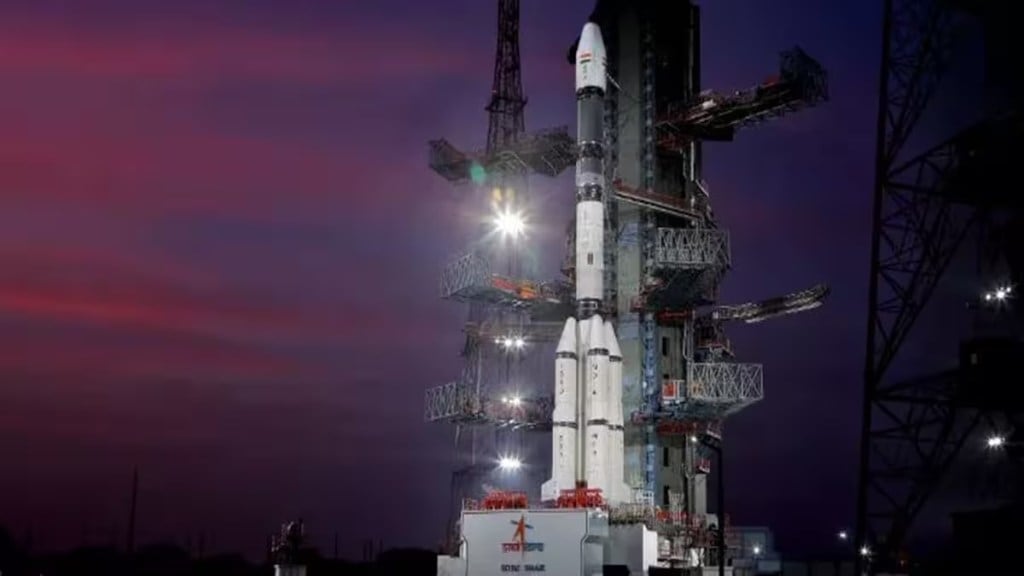Ahead of the 91st Air Force Day, the Indian Air Force has shown the world a glimpse of its astronauts who are soon going to be a part of ISRO’s Gaganyaan project. In a short movie video that the IAF released on Tuesday, three-four air warriors were shown training for India’s first ever human mission. The goal is to send three Indian astronauts on a seven-day journey to low Earth orbit aboard a spacecraft.
The short video of 11 minutes titled: ‘Air Power Beyond Boundary’ showcased fighter jets, transport aircraft, helicopter and missile capabilities as well as the astronauts training. Keeping in mind the sensitivity of the mission, IAF did not show their faces nor shared their names or the location of their training. According to reports, these air warriors are undergoing rigorous training at ISRO’s Astronaut Training Center in Bengaluru.
Financial Express Online has reported previously that almost 60 pilots from the Air Force were selected and after a stringent selection process only 3-4 were shortlisted to undergo intense training for the mission. These astronauts were also sent to Russia in 2020 for special training for almost a year at the Gagarin Cosmonaut Training Center in Russia.
After orbiting in space, Gaganyaan will land somewhere in the Indian sea, hence these air warriors have also been trained at the Indian Navy’s deep-diving training center in Kochi. ISRO has also prepared its HLVM-3 rocket launcher and orbital-module (OM) for Gaganyaan. In this orbital module, the astronauts will get the environment exactly like living on Earth. This OM is equipped with special state of the art avionics.
However, it is not yet clear when this flagship project of ISRO will be launched, but the success of Chandrayaan-3 has increased the possibilities. Recently, when Prime Minister Narendra Modi visited the US, the two leaders discussed deeper cooperation in space and India inked the Artemis Accord.
It is believed that for this, both the countries can also make an agreement under which manned flight can be sent to space in the next year i.e., 2024. For this, ISRO is in constant touch with NASA (National Aeronautics and Space Agency).
Background
The Indian Space Research Organisation (ISRO) has encountered setbacks in its eagerly awaited Gaganyaan mission, which aims to send Indian astronauts into space for the first time. Initially scheduled for a 2022 launch, the mission has now been postponed to 2023.
A National Aspiration:
India’s maiden manned Space Mission Gaganyaan was unveiled by Prime Minister Narendra Modi in his 2018 Independence Day address, with the original plan aiming for a 2022 launch. However, due to various challenges and delays, the launch date has been rescheduled for 2023. ISRO has been diligently working on developing the necessary technologies and infrastructure for the Gaganyaan mission, including the spacecraft, launch vehicle, and ground support systems. The agency has also trained a team of Indian astronauts for this historic mission.
The Gaganyaan mission marks a significant milestone for both ISRO and India, as it marks the first-ever journey of Indian astronauts into space. It serves as a testament to ISRO’s capabilities and its ability to undertake intricate and ambitious space endeavours.
The selection of astronauts for the Gaganyaan mission involved rigorous assessments of physical and mental aptitude, as well as training in survival and emergency procedures. These astronauts have undergone extensive preparation, including training sessions in Russia and the United States.
As previously reported by Financial Express Online, four cosmonauts were shortlisted for the Gaganyaan mission, and in 2021, they completed their training in Russia. This ambitious project, with a budget of Rs 10,000 crore, was initially intended to coincide with India’s 75th independence anniversary in 2022, but it has now been rescheduled to 2023.
The Gaganyaan spacecraft will be launched aboard the GSLV Mk III rocket, a three-stage heavy lift launch vehicle developed by ISRO. The GSLV Mk III can carry payloads weighing up to 4,000 kilograms into low Earth orbit. The launch will take place from the Satish Dhawan Space Centre in Sriharikota, situated on the Bay of Bengal coast in the Indian state of Andhra Pradesh. After launch, the spacecraft will be inserted into low Earth orbit by the GSLV Mk III and will then perform various manoeuvrers to reach its final orbit.
The mission will see three Indian astronauts spending seven days in space.
Challenges: ISRO’s Hurdles and Evolving Schedules
Several factors have contributed to the delays faced by ISRO in the Gaganyaan mission. The primary reason is the global COVID-19 pandemic, which disrupted the work schedules of many space agencies worldwide. Additionally, ISRO has grappled with the complexities of developing the essential technologies and infrastructure for the mission. Supply chain issues have also arisen, as many components required for the mission are sourced from overseas, and the pandemic has disrupted the global supply chain, further causing delays.
Another contributing factor is the sheer complexity and ambition of the Gaganyaan mission, which necessitates the development of new technologies and the integration of numerous systems. These technical challenges have slowed down the mission’s progress.
Nevertheless, ISRO remains committed to overcoming these challenges and launching the Gaganyaan mission as soon as possible. In the interim, the agency continues to focus on other critical missions, including a solar mission slated for 2023.
It is crucial to recognize that delays are not uncommon in the realm of space exploration, and ISRO has a commendable track record of successfully executing missions despite encountering obstacles.
In summary, the Gaganyaan mission represents a formidable and ambitious undertaking that demands the development of innovative technologies and the intricate coordination of multiple systems. ISRO is steadfast in its efforts to surmount the challenges and make the mission a reality in the near future.

